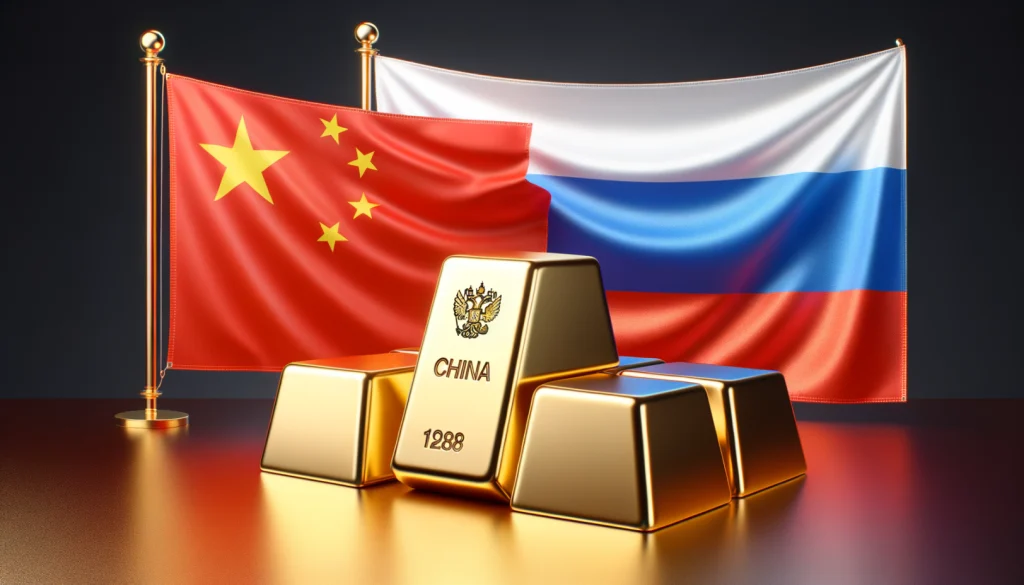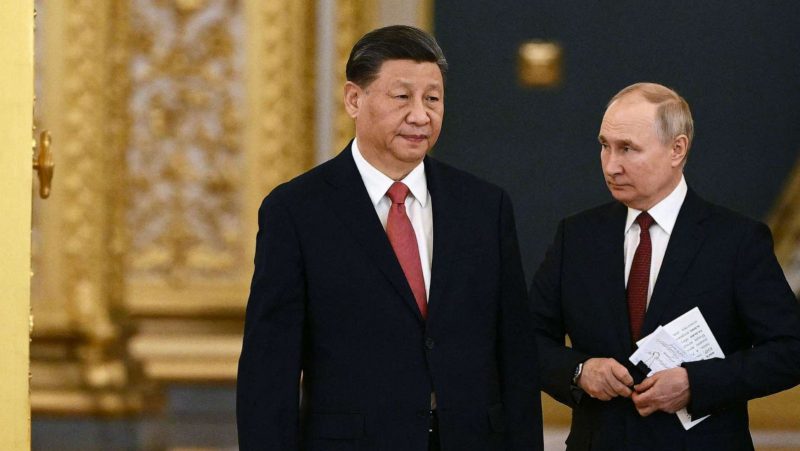Through the BRICS de-dollarization efforts, both Russia and China are pioneers in driving the global shift from the US dollar to Gold. Indeed, the Central Bank of both nations has firmly embraced her acquisition of the metal by growing uncertainty about the greenback’s ongoing fortification as the global reserve.
This has led to thriving values of the haven asset. Specifically, Bloomberg analyst Mike McGlone has noted the “unlimited friendship” of Russia and China’s leaders and has stated that the shift in world order has driven various other Central Banks to embrace gold as a store of value that can counter the US dollar’s decline.

Also Read: BRICS: China Unveils Blockchain Project to End US Dollar in Trade
Russia and China Driving Global Interest in Gold
Throughout the last year, the BRICS alliance has not been shy about its de-dollarization efforts. Amid Russian sanctions, the collective sought to protect itself through limited exposure to the Western currency. Through that, they have embraced the promotion of local currency, and the embrace of alternate asset classes.
This includes things like digital assets, which the bloc has continually sought to integrate into its infrastructure. However, it is also in the realm of alternative stores of value, with BRICS nations Russia and China driving the global shift from the US dollar to gold.
Bloomberg’s McGlone took to X (formerly Twitter) to speak on the nation’s impact on the asset. Specifically, he discussed how the $2,000 mark went from resistance to support amid the metal’s positive performance. Additionally, he predicted “gold consolidating around $2,000 for a fourth year and breaking out higher in 1Q,” despite consistent ETF outflows.
Also Read: After BRICS, 3 New Countries Ready To Launch Own Currency
Thereafter, McGlone noted that the development is due, in large part, to the BRICS countries. “Diveergent straneght in the metal is my taekeawy adue tot eh shift int eh world order” McGlone said. Additionally, he referred to the “unlimited friendship” between Russia and China’s leaders as the basis for that transition.
The increasing value of gold has been discussed alongside increased acquisition from central banks throughout the globe. Moreover, that increase has derived from BRICS blocs’ leading the way.
Amid the dollar’s fragile state, diversification in value holdings is a smart play and has been thoroughly embraced on a global scale. Now, the primary question is what that shift will mean for the greenback in the long term.





